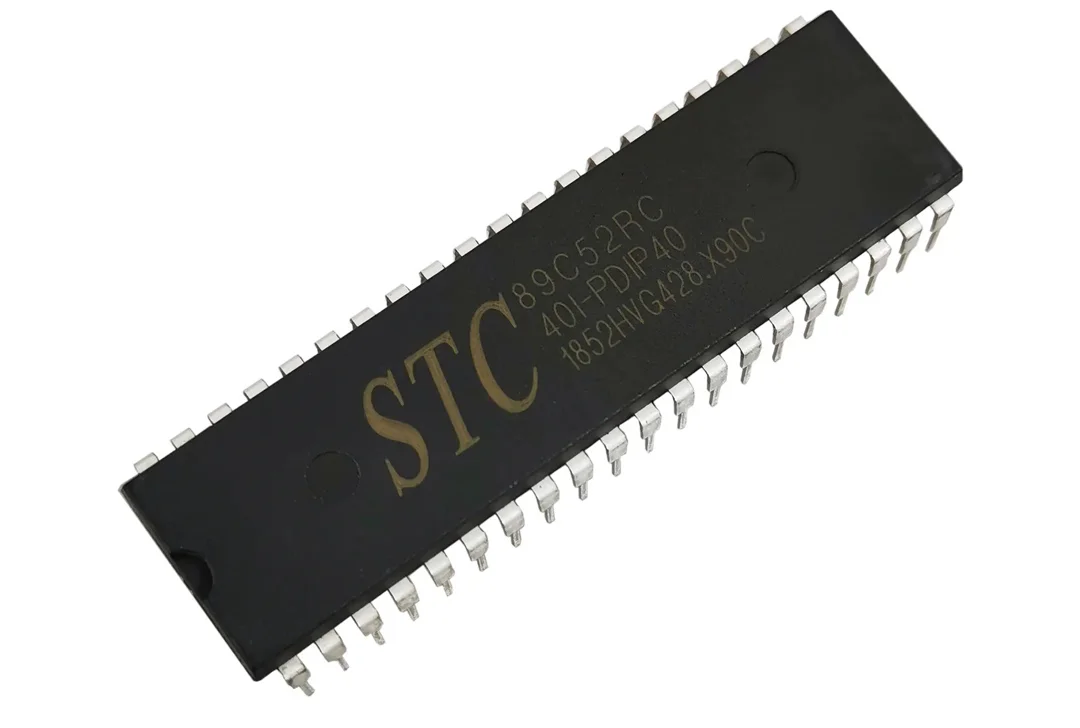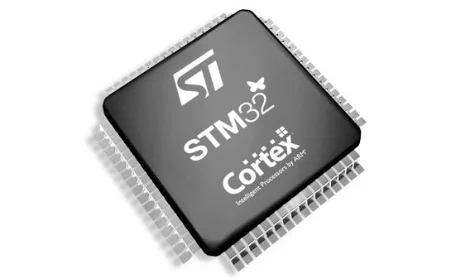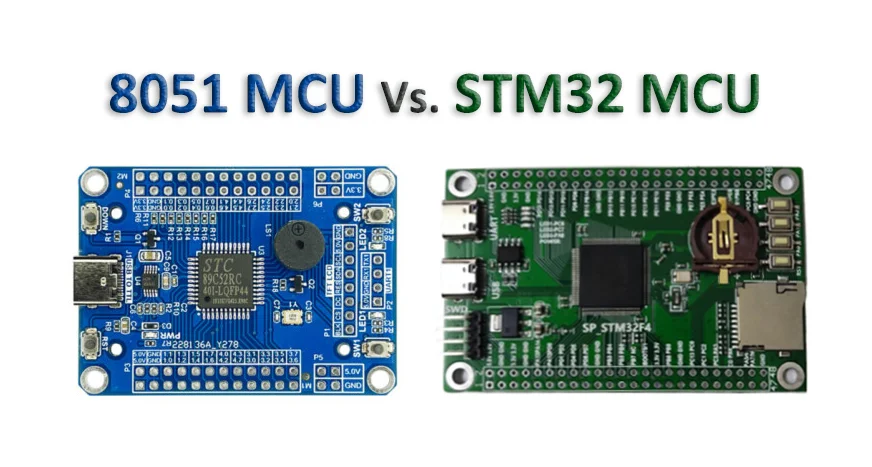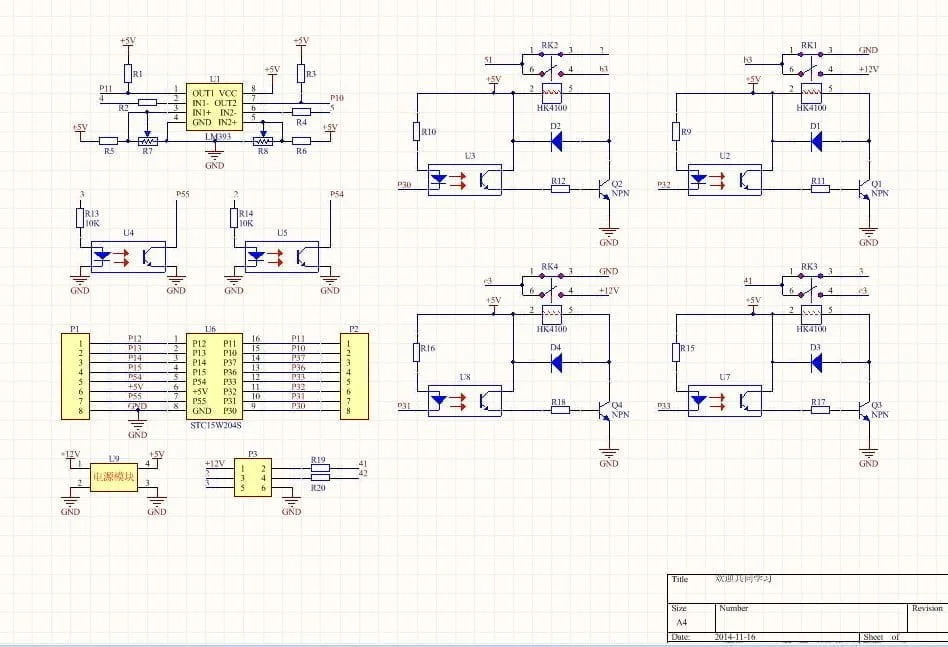8051 MCU
The 8051 MCU is the most widely used 8-bit microcontroller, originally developed by Intel in 1980. Its typical architecture, centralized management of dedicated bus registers, numerous bitwise operations, and rich instruction set for control applications make it a first-generation “classic,” laying the foundation for the development of other microcontrollers in the future.

Features of the 8051
The 8051 microcontroller’s popularity and ease of use stem from the following characteristics:
1. It has a complete bitwise operating system from hardware to software, known as a bit processor, which operates on individual bits rather than words or bytes. It can perform operations like transfer, set, clear, test, and logical operations on specific bits in special function registers, making it highly versatile and easy to use.
2. It includes a dual-function address space within the on-chip RAM area, providing great flexibility to users.
3. It offers multiplication and division instructions, adding convenience to programming. Many 8-bit microcontrollers lack multiplication functionality, requiring the creation of subroutines for multiplication, which can be inconvenient.
Drawbacks of the 8051
1. Features like AD converters and EEPROM require external components, increasing hardware and software complexity.
2. While I/O pins are easy to use, they have no output capability when in a high-level state, which is a significant limitation of the 8051 series.
3. The execution speed is relatively slow, especially for double data pointers. Improvements in this aspect would greatly enhance programming efficiency.
4. The 8051 has poor protection capabilities and is susceptible to chip damage.
Commonly used series of the 8051
Currently, it is widely used in educational settings and applications with low performance requirements, with the 8051 and 80C51 devices being the most commonly used.
STM32 MCU
The STM32 series of microcontrollers from STMicroelectronics is known for its outstanding cost-effectiveness and powerful features. It is based on the ARM Cortex-M core, specifically designed for high-performance, low-cost, and low-power embedded applications. The STM32 microcontrollers offer top-notch peripherals, including a 1μs dual 12-bit ADC, 4 Mbps UART, and 18 Mbps SPI.
They also excel in power efficiency and integration, although they may not match the power efficiency of the MSP430. Thanks to their straightforward architecture, user-friendly tools, and impressive functionality, STM32 microcontrollers are highly regarded in the industry.

Features of STM32
Core: ARM 32-bit Cortex-M3 CPU, with a maximum operating frequency of 72MHz, 1.25 DMIPS/MHz, single-cycle multiplication, and hardware division.
Memory: On-chip Flash memory ranging from 32KB to 512KB and SRAM from 6KB to 64KB.
Clock, Reset, and Power Management: Supports power supply voltage from 2.0V to 3.6V, voltage drivers for I/O interfaces, Power-On Reset (POR), Power-Down Reset (PDR), and programmable voltage detector (PVD). It includes features like 4-16MHz crystal oscillators, factory-trimmed 8MHz RC oscillators, internal 40kHz RC oscillators, PLL for CPU clock, and 32kHz crystal oscillator for RTC with calibration.
Debugging Modes: Supports Serial Wire Debug (SWD) and JTAG interfaces, with up to 112 fast I/O ports, up to 11 timers, and up to 13 communication interfaces.
Commonly used STM32
The most commonly used STM32 device series include STM32F103, STM32 L1, and STM32W series.
Comparison of 8051 MCU and STM32 MCU
| Feature | 8051 MCU | STM32 MCU |
|---|---|---|
| Architecture | 8-bit microcontroller | 32-bit microcontroller (ARM Cortex-M core) |
| Development Origin | Intel (1980) | STMicroelectronics |
| Bitwise Operations | Extensive bitwise operation support | Supports bitwise operations |
| Instruction Set | Rich instruction set for control applications | ARM Cortex-M3 CPU with versatile instruction set |
| Memory | Limited on-chip memory, often requires external memory for larger applications | On-chip Flash and SRAM, various memory configurations available |
| Peripheral Integration | Basic peripherals, limited integration | Extensive peripheral set, including ADC, UART, SPI, etc. |
| Power Efficiency | Varies; typically consumes more power than STM32 | Generally more power-efficient |
| Development Tools | Various development tools available | Robust ecosystem with a wide range of development tools and libraries |
| Popularity | Still used in some applications | Highly popular and widely used in embedded systems |








